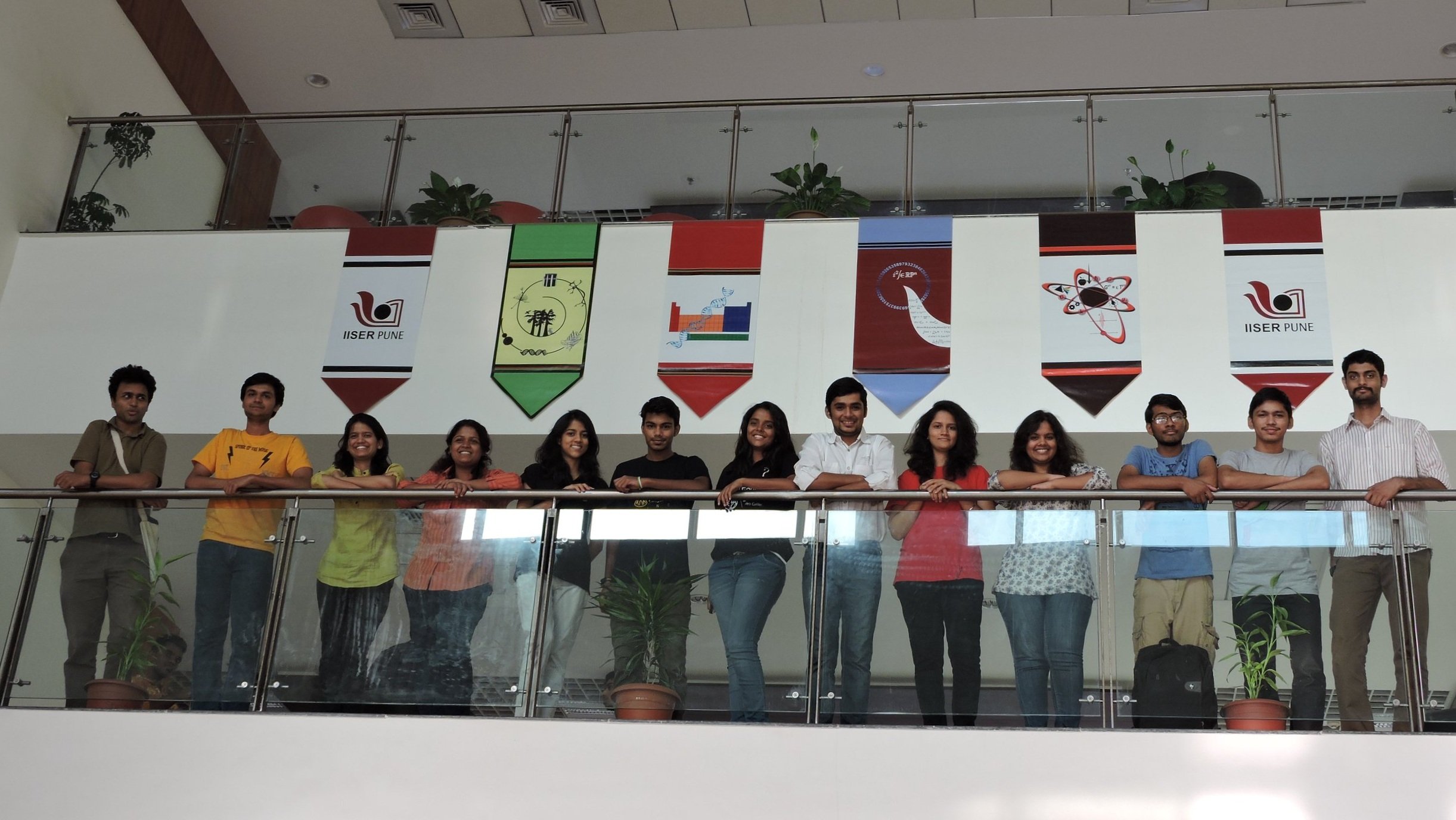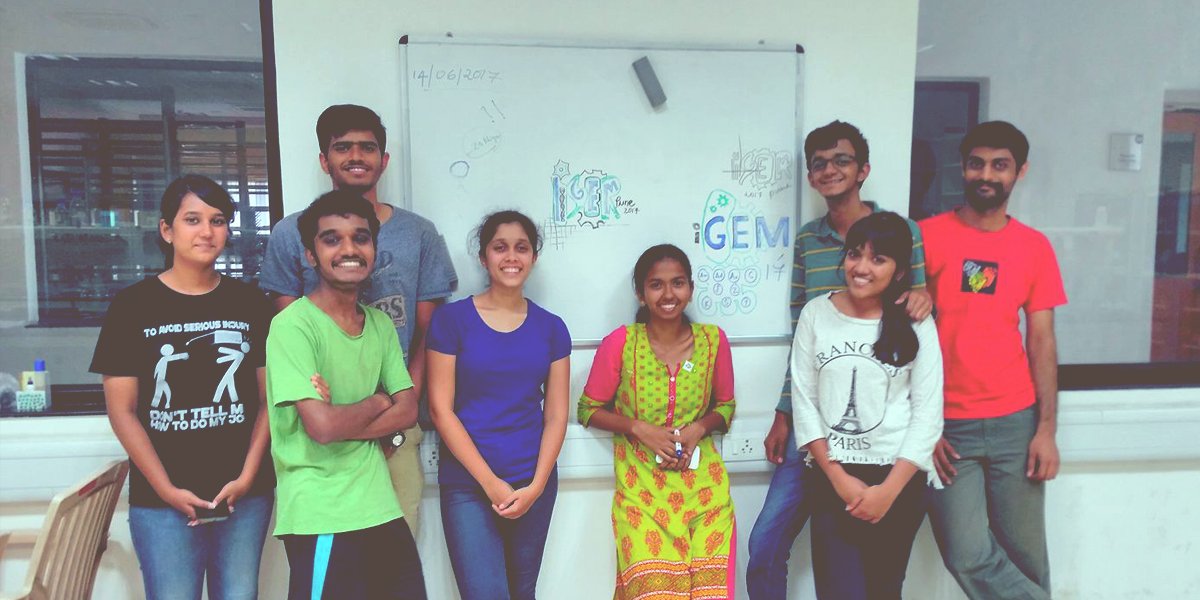A Pursuit to Figuring Out How Biology Works: It Began at iGEM
“iGEM acted as my gateway into exploring research in biology, which I might not have actively looked into otherwise. I would say iGEM happens to be one of the means by which I found my liking for synthetic and quantitative biology.”
Yash was introduced to iGEM through an institute-wide email while searching for a summer project. He was involved in iGEM on and off for five years at IISER Pune. He started in 2015 as a team member, in 2017 as an advisor, and in 2019 helped the team with the modelling part of the project and measurement track analysis. He is currently a PhD student under Prof. Dr. Marileen Dogterom (University Professor at the TU Delft) and Medical Delta Professor at Leiden University working on cytoskeleton and has published 6 papers with over 470 reads.
Mycobacterium Revelio: Fighting Tuberculosis
“It was around the end of the second academic year, I was looking for a summer project (solar energy/cells in physics, mostly a reading project), and then there was an institute-wide email regarding iGEM. I attended the introductory session, and the pitch got me interested - synthetic biology as modular lego-like construction, curiosity-driven independent project, contributing to society, competing at an international level and actual lab work (that too at the end of the second year). That’s how I got involved in iGEM.”
About a month or two before the start of iGEM, through weekly brainstorming meetings, IISER-PUNE had narrowed their ideas down to two concrete research problems based on weekly literature review and feasibility - TB diagnostics and Universal Blood. With the help of their PI, they decided on TB diagnostics. “Our 2015 project was called “Mycobacterium Revelio”, the idea was to have a quick, robust, economical and safe diagnostic solution for Tuberculosis. It had 3 modules – ‘hijack’ to increase the growth rate of cells by modulating the cell cycle using a genetic oscillator, ‘detection’ to detect the presence of cells expressing visible colour dyes by simple tools, and ‘terminator’ a cell density based kill-switch expressing toxins based on quorum sensing.”
The project overall was continued and taken forward by the 2017 team. “The 2015 team wrote a PLOS Collections iGEM report about the project. I continued and published my work from the 2015 detection module on improving the focus of Foldscope. And later with Yash Joshi, we published our model from the 2017 project for tuning the dual feedback genetic oscillator.”
Team IISER-PUNE 2015
Moreover, talking about his first jamboree experience, “I cannot pinpoint any particular moment but attending the jamboree then was a surreal experience, ‘first’ of the many – presentation, poster, conference and travel and that too international”
Choosing His Pill: Biology or Physics for an Undergrad Project
“At that moment in the summer of the second year, I decided to try an unknown iGEM synthetic biology project over the physics solar cells project and here I am currently pursuing a PhD in biology. Well, my physics majors friends do sometimes like to call out biology majors friends for stealing an experimental physicist from them.”
His iGEM experience taught him that research, especially in biology, needs time, patience and hard work, and is often collaborative and interdisciplinary work, and may not pan out as you expected.
Figuring out How Biology Works: The Physics Behind Biology
His current work is about reconstituting a minimal mitotic spindle using microtubules, motors and centrosomes in a cell-like environment. And controlling its position using optogenetic tools to understand force balance in spindle positioning. “It is a part of the ‘Building a Synthetic Cell’ (BaSyC) consortium. It does relate to synthetic biology, in the case of iGEM, projects mostly take a top-down approach whereas, in BaSyC, it’s a bottom-up approach. I am also working in collaboration on a minimal prokaryotic active DNA segregation system based on ParM for the synthetic cell project.”
Talking about his motivation and goals for the future, he said,
“My motivation for research has fairly remained the same from the beginning, to understand how the things around us work, now more so focussed on biological things, life. How does a sack of proteins come alive, do we understand it and if so can we control it? Currently, the goal is to gain Postdoctoral experience after finishing my PhD in the field of synthetic biology and biophysics related to cytoskeletal systems. And later continue in the field of academia.
Message for future iGEMers:
Team IISER-PUNE 2017
“I consider myself still a beginner in the field of synthetic biology to comment on the future. Based on my understanding, it has now fairly become an established field, basic groundwork done ‘the lag phase of the growth’, and in the coming years, we should expect growth and nice applications, ‘the log phase’. But there are still some technical/research hurdles to overcome e.g. redundant network effect, and orthogonality to keep on extending ‘the log phase’ of development.”
To the future iGEMers “I would just say ‘Enjoy! What you are doing’. It’s a fun learning experience to cultivate a scientific temper.”










